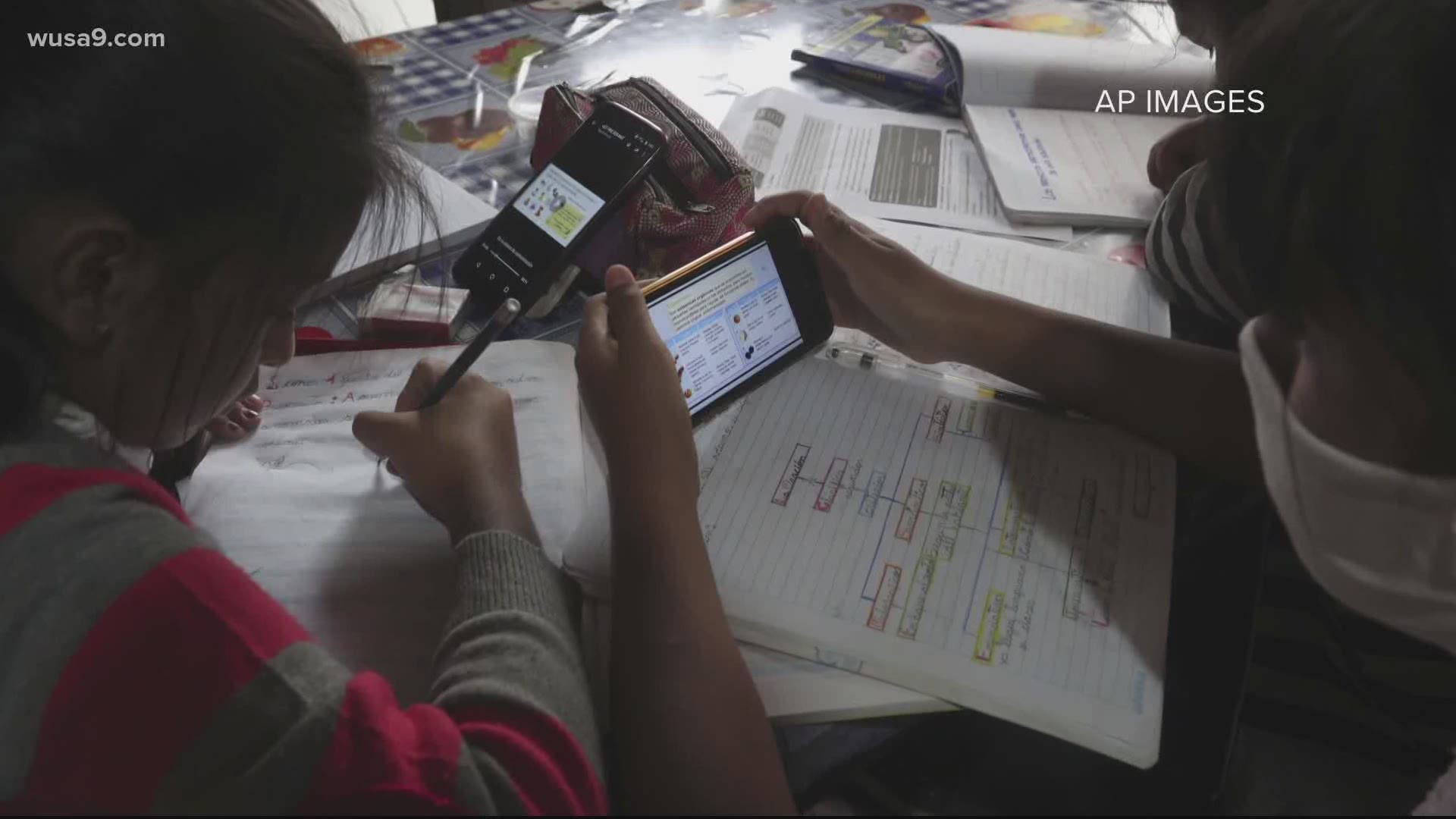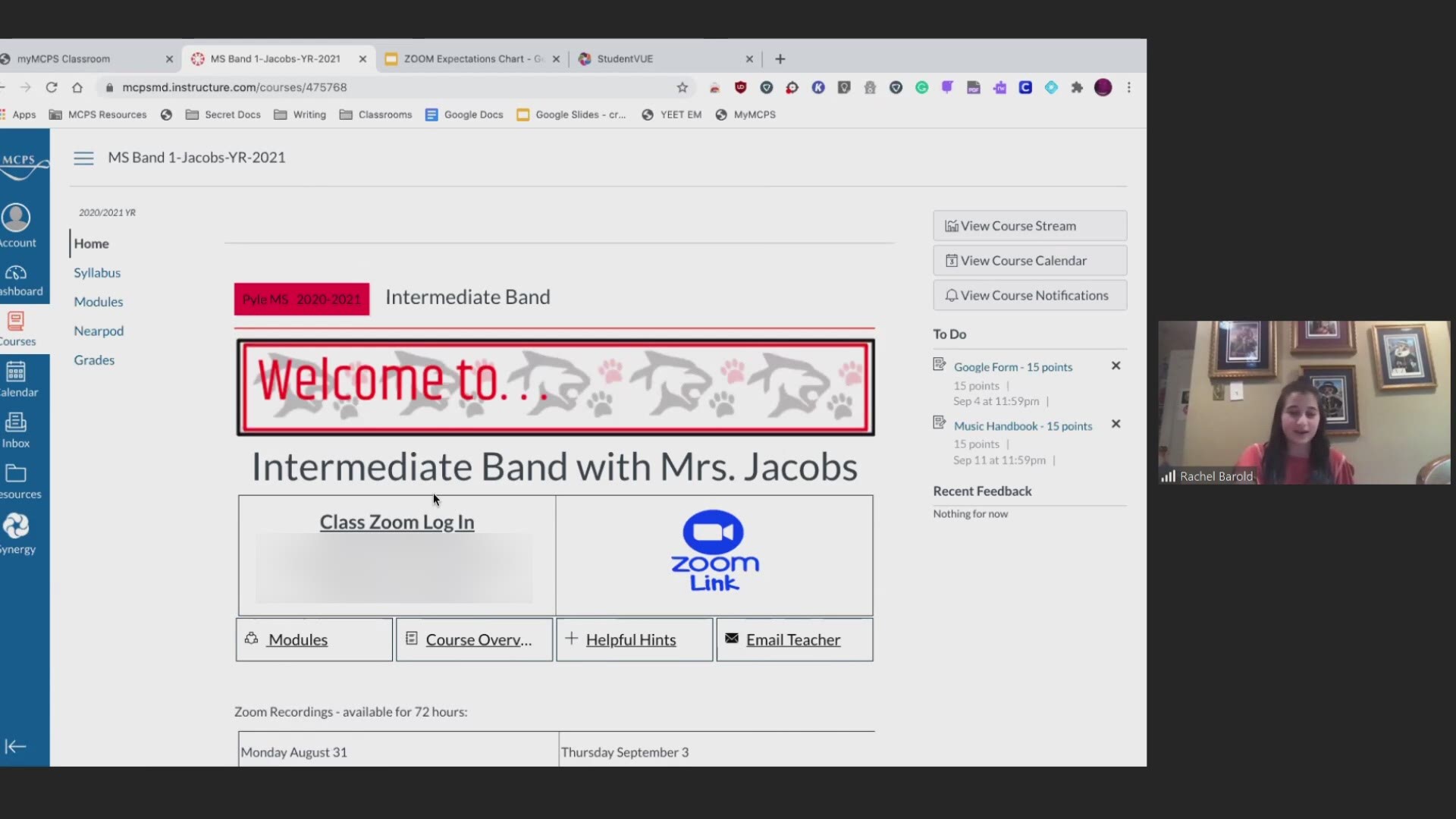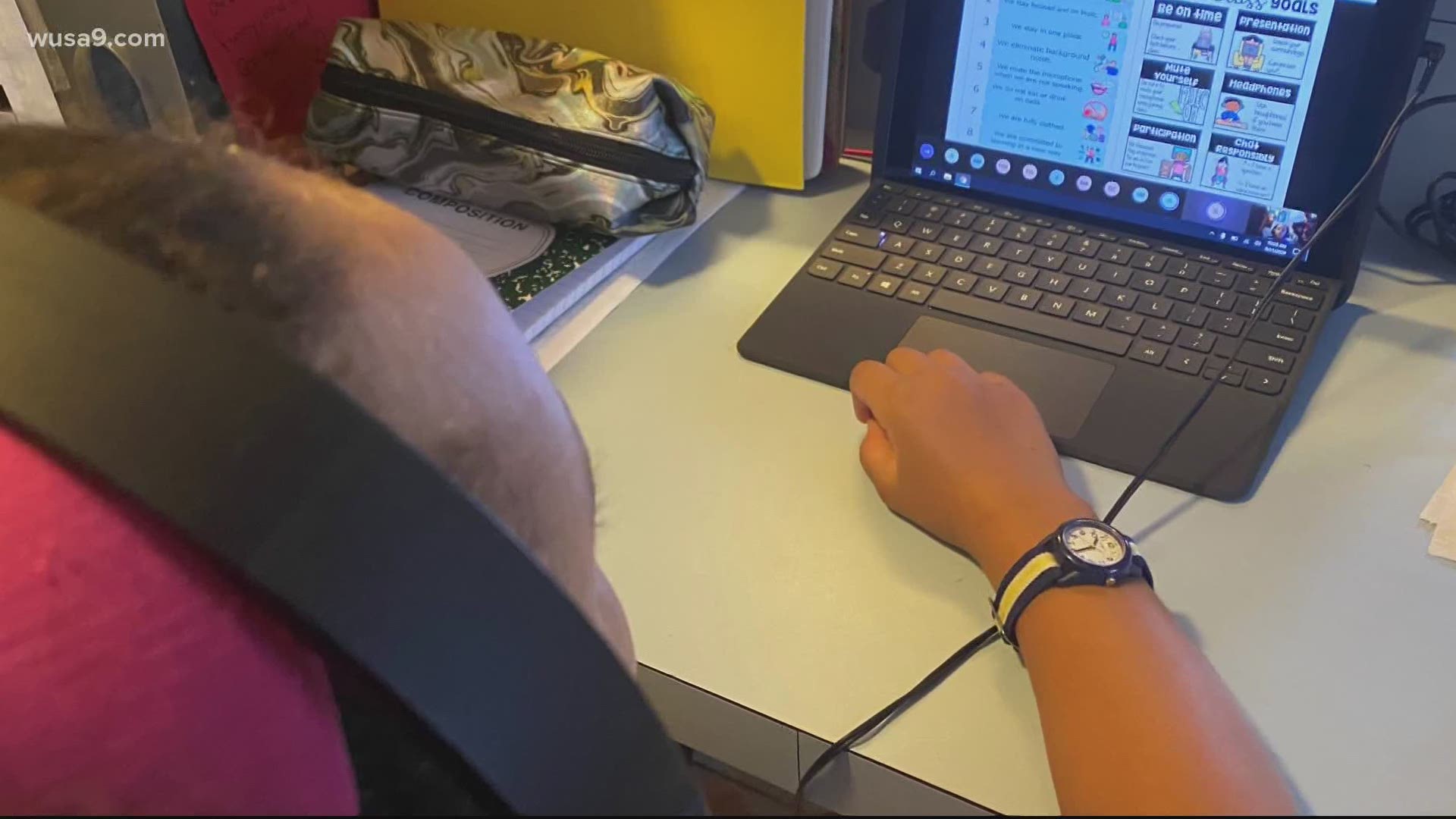MARYLAND, USA — The start of the virtual school year on Monday brought glitches and other issues in parts of Maryland as teachers and other administrators continued a call to bridge "the digital divide" some students experience.
In Montgomery County, technical issues were reported with online learning portal MyMCPS, after some students had trouble logging into the program.
Elsewhere, Prince George's County Public Schools confirmed that an "isolated incident" took place Monday morning and was later resolved after two schools needed to be rerouted to a new server.
The issues were largely expected as thousands of students and staff returned to virtual classrooms and put a strain on systems.
For the teachers who needed to make the conversion to the digital realm, Maryland State Education Association President Cheryl Bost said that the technical issues added on to the list of things to monitor for instructors all around the state.
"It’s constant technology troubleshooting and trying to teach while kids might be distracted," she said. "All of these things that somewhat come naturally to us when we walk into the classrooms, we’re relearning all over again. I think every educator feels like a new educator these first couple of weeks.”
Many teachers first began researching and examining virtual teaching methods last spring when the pandemic forced schools to close their doors for in-person learning.
Months later, Prince George's County Educators' Association President Theresa Mitchell Dudley said veteran teachers, in particular, continued to struggle at times while making the transition.
Despite Gov. Larry Hogan pushing for schools to reopen, Bost said the technical concerns would still remain if teachers and students split time between virtual learning and in-person lessons.
"These problems are still going to remain even in a hybrid situation," she said. "When students are not in school, they’re going to have to get on the virtual platforms.”
Both Bost and Dudley pointed to "the digital divide" as an ongoing concern for some families.
The issue, which highlights the disparities in digital devices and high-speed internet, particularly impacts minority students.
According to a study by the Alliance for Excellent Education, 26% of Latino households and 21% of Black households in Maryland do not have access to high-speed internet. For comparison, 13% of white families in the state do not have access to high-speed internet.
Moving forward, both Dudley and Bost said it was important for districts to help bridge the gap.
"Let’s get it right," Bost said. "Let's get these devices in the hands of kids. Let's increase connectivity.”
As districts in Maryland continue to navigate through the virtual school year, Bost added that teachers would keep working hard to help students.
"It is trying times that everybody is working," she said. "But our goal is to make it the best experience we can for our students."




